#nordic folklore
Explore tagged Tumblr posts
Text

Bet you didn’t think you’d learn what human and 100% troll Fass looked like today, did you? Or what his parents looked like. Or what he looked like as a human kid. Nope, betchu didn’t.
But anyway. A bunch of miscellaneous troll/changeling information just because. Also trolls are born as beans like bears. Just so everyone knows. Female trolls are called sows and males are called bores. That’s all.
#idk why#but I just really love how his mom looks#she’s very crunchy#fae#faerie art#troll character design#troll changeling#nordic folklore#folklore#character design#artists on tumblr#small artist#my art#young artist#digital art#regular style#changeling#faas art#tgb art#tgb#the grey in between#creature design#fae art#speculative biology#spec bio#troll art#troll#scandinavian folklore
432 notes
·
View notes
Text

This illustration is based on the old Finnish legend where it was believed that the northern lights were caused when the tail of a fox would swipe across the frost, causing sparks to fly to the sky and light up in colors, creating the northern lights.
#digital art#digital illustration#digital drawing#art#drawing#illustration#procreate art#lineart#fantasy art#fantasy#Legends#legend#nordic folklore#folklore#fox#artic fox#northern lights#finnish#finland#landscape#night#night sky#stars#winter#finnish lapland#lapland#winter landscape#winter forest#mountains
174 notes
·
View notes
Text

Some nordic folklore creatures, but in (at least sort of) Gravity Falls style! :]
Got them here in separate pics + notes I tried to somewhat write as Ford. Though, I probably have massively failed 'cause I just can't replicate the fancy literature speak he does :')

Nisse
Might be related to Gravity Falls' own Gnomes, but with a few variations to them. For one, they are a little bigger than our resident Gnomes and have pointed ears instead of rounded ones. They also are more chaotic, but can become docile when given porridge of all things. And they tend to reside inside barns instead of the forest.
Such an interesting creature I wished I could speak to. However, whenever me and S have encountered one, they only speak in one of the languages of the nordic countries. They seem to understand us- calling us "turister," which a local have told us meant "tourists"- and absolutely despise us. Unless- like I mentioned earlier- we give them porridge. I would have to talk to the Gnomes and see if they have the same fascinations with porridge as these Nisse do.

Huldra
The locals I have talked to about Huldra have told a few different tales that either go one way or the other. Either they just want to get married, resulting in their cow tail popping off of them. Or they want to lure men away so they can kill them.
In a way, Huldra could be classified as a land version of a Siren. The only real big difference between one of these ladies and a regular woman is the cow tail I mentioned.
From what I have gathered, the Huldra have adapted a bit over the years to not only know the nordic languages, but also many other languages like English, Spanish, German, Hebrew, and so on. I do hope me and S can find one of them while we're here, I just hope it will not end in another rescue mission.

Nøkk
Nøkk- or Nøkken as some locals call them- is a creature that resides in lakes and sometimes rivers. Although it is probably one of the easier creatures to try and look for, we did not have the time to rent a car or walk all the way to one of these lakes that people had seemingly seen one in. Maybe some other day.
The descriptions of this creature, however, was still nonetheless interesting. It is mostly made out of algae and seaweed, has bright yellow eyes that gaze at you, and- during the full moon- can transform into a shining, white horse. The locals that have told me about this "horse form" have spoken about Nøkken luring people onto it's back before diving right into the water to drown them.

Draug
Draug- or Draugen- is a creature I have been advised to not encounter at all. The few that knew of it told of tales of sailors, fishermen, and seafarers alike stumbling upon this creature, then soon after meet their demise. Some have said Draugen is the one that kills them, some have said Draugen is simply there to warn of their upcoming death. No one is sure which is true as no one has met it and survived.
Another thing a select few locals have mentioned is how Draugen might have been once a human itself, but then met a tragic end out on the ocean. It would've been nice to try and speak to it, but considering the possibility of S and I dying as a result, I would rather not take the risk.
#For some of these fellas. I decided to put my own lil' spin on them.#The most notable one being Draugen. which I've decided to mix two interpretations of it.#I wanted Draugen to look like a regular fisherman from behind. but anything but from the front.#Nøkken. Nisse and Huldra pretty much look like a previous drawing of mine I've done of them. but I did change up Nøkken a lil' bit#And honestly. I like this version I did of Nøkken than the previous one :]#my art#Gravity Falls#Sorta#Nordic Folklore
168 notes
·
View notes
Text

The Black Bull of Norroway illustrated by Niall Grant
65 notes
·
View notes
Text
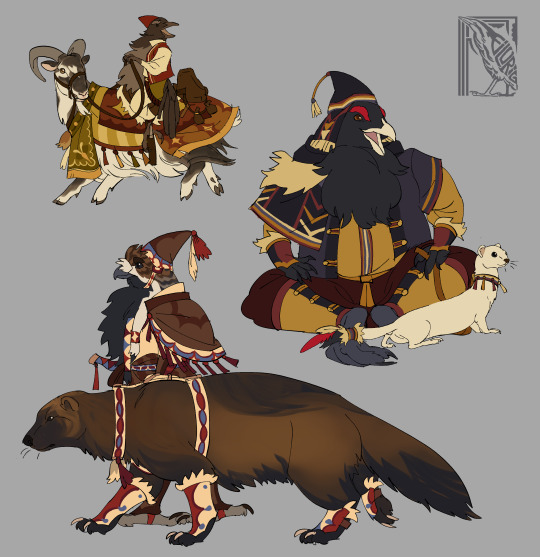
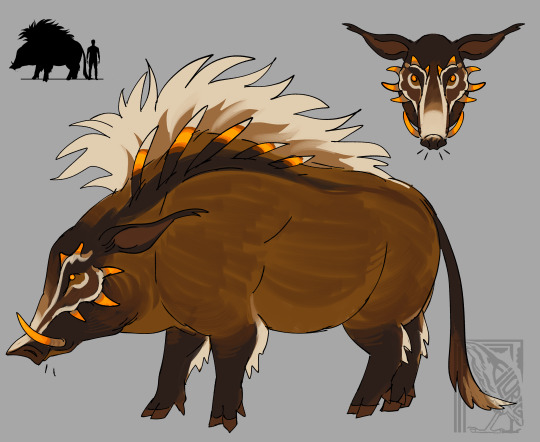
some stuff involving non sapient creatures in pareidolia, first image is some animals that tomtar have domesticated, second is a remake of gloson, which is a vätte but is, contrary to most other ones ive made, not a sophont and is instead domesticated by trolls. more info below the cut...
ive already talked about the tomteget in another post, so i wont go into detail about them here, but the one shown in the picture is gullmar's goat (and he is there as well as ucan see). tomtar also keep a domesticated breed of wolverine and ermine, used for some different purposes - wolverines more as guarding/herding animals and ermines to hunt. tomtar don't actually tend to hunt a lot of large prey at all, and what they do hunt is sort of limited as a lot of game birds are sacred to them due to folklore (basically ptarmigans, corvids, grouses, capercailles and things in those veins..). therefore despite how small ermines are they can hunt most of the quarry they prefer such as hares, ducks etc - especially bcs the tomte variety of ermine is bred to be a bit larger and more robust. they can also just be kept as companion animals for many tomtar. wolverines meanwhile serve well as guarding and herding animals due to their size and strength. there is a notable regiment of wolverine fighters in the midlands front - where interested tomtar are trained for combat utilizing the power of the wolverine - the one pictured though is a regular herding/guarding animal though. there are probably some smaller tomte hunting groups that try to go for bigger game with them such as wolves etc. but its definitely pretty unusual. tomteget goats are basically universal across tomte cultures, but the tomte wolverines and ermines are a bit more limited, more occuring in northern cultures historically. although as time goes on they have been spread further south, especially as the midlands front was established and increased the communicative network between different disparate tomte societies. 2. this is just a remake of the gloson from that older post bcs i wasnt really happy with the design - its a laaaaarge animal but didnt really feel like it proportionally bcs i stuck too closely to the normal eu swine proportions... things are mostly the same about them though. the orange parts of the horns glow!
#worldbuilding#fantasy#folklore#tomte#gnome#gloson#nordic folklore#spec bio#creature lore#pareidolia tag#bestiary#speculative fantasy#also i am gonna expand design possibilities for tomtar as u can see its not just limited to very ptarmigan/crowesque designs...#basically going to stick to grouse/ptarm/caperc. etc for the northern subsp.#and diff corvids for the southern subsp.#crosses between those can be a mix of both of course#oc: gullmar
292 notes
·
View notes
Text



Old Swedish Easter cards with Easter witches (they were said to fly to Blåkulla on the Thursday before Easter to party with the Devil and his demons). The first card was made by Jenny Nyström in 1913, the second by Sigrid Sundius-Dahlström somewhere between 1930 and 1950, and the third was made by Jenny Nyström and sent in 1903.
Hope you also have a nice Easter with all your witch friends and their cats! ^^
76 notes
·
View notes
Text
altars for nordic gods
keep in mind that altars like these have very little historical backing, and this information is mostly for the use of the modern pagan. also pretty much every god can be honored with offerings of meat, mead, wine, and your own blood.

ODIN
Colors: grey/silver for justice; deep blue, black for magic; red for war
Offerings: nine sacred herbs (chamomile, nettle, fennel, crab apple, mugwort, plantain, watercress, chervil, betony), runes, food for ravens, poetry
Crystals: sodalite, lapis lazuli, amethyst, lepidolite, obsidian, labradorite
Animals: his ravens (Huginn and Muninn), his wolves (Geri and Freki)
THOR
Colors: yellow, white, grey for thunderstorms; red for war; blue for the sky
Offerings: rainwater, hawthorn, oak, garlic, onion, hearty meals
Crystals: fulgarite, blue quartz/calcite, yellow jasper, sodalite, obsidian, hematite
Animals: goats
LOKI
Colors: black, green for mischief; yellow/gold for wealth; red, orange when he is combined with Logi
Offerings: yellow rattle, birch, mistletoe, snake shed, cinnamon, dandelion, coins/money
Crystals: labradorite, jade, malachite, pyrite, citrine, bloodstone, gemstones, serpentine
Animals: birds, horses, snakes, foxes
TYR
Colors: dark blue, silver/grey for justice; red for war
Offerings: holly, mustard seed, bread, oak, ash, good deeds are especially emphasized with Tyr
Crystals: lapis lazuli, sapphire, red jasper, bloodstone, obsidian, hematite
Animals: wolf, dog, bear, eagle
BALDR
Colors: gold/yellow, white for opulence; sky blue, pink for beauty
Offerings: chamomile, daisies, white blossoms, honey, juniper berries, laurel leaves, sunflower
Crystals: sunstone, celestite, selenite, pearl, rose quartz, pyrite, milky quartz
Animals: foal
FRIGG
Colors: blue, silver/grey, white for the moon; yellow/gold for opulence
Offerings: cardamom, allspice, sweet wines, milk, handspun fiber, feathers, moss
Crystals: moonstone, selenite, celestite, pyrite, milky quartz, rose quartz, agates
Animals: falcons, hawks, geese
HELA
Colors: red, orange, black for the underworld; white, grey for the dead
Offerings: white flowers, apples, willow, dark chocolate, coffee beans, mushrooms, clove--leave food until rotten
Crystals: bloodstone, jet, onyx, obsidian, black tourmaline, volcanic stone, red jasper, hematite
Animals: owl, raven, dog, wolf
FREYJA
Colors: red, pink, white for love; green, brown for nature; gold/yellow for her cape; purple, dark blue for magic
Offerings: jasmine, rose, verbena, collecting cat whiskers, honeycomb, fruit, fresh flowers, chocolate
Crystals: amber, petrified wood, agates, garnet/ruby, pyrite, lapis lazuli, rose quartz, emerald, jade, tiger's eye, cat's eye, amethyst
Animals: cats, pigs, horses, falcons
FREYR
Colors: green, brown for nature; yellow/gold for sunshine
Offerings: grain, apples, bread, nuts/seeds, venison, anything phallic, antlers, birch, hawthorn, coins/money
Crystals: green aventurine, agates, petrified wood, jaspers, jade, citrine, zoisite, pyrite
Animals: deer/stag, boar, horse, bee
NJORD
Colors: white, blues for the sea
Offerings: fish, sea salt, shells, beads, tobacco, fishing gear
Crystals: aquamarine, larimar, gemstones, pearls, malachite, sodalite, azurite, iolite
Animals: seabirds, sea mammals
SKADI
Colors: white, light blue for winter; brown for the hunt
Offerings: raw meat, berries, nuts, clear liquors, pelts, antlers
Crystals: milky quartz, bloodstone, blue calcite, chalcedony, jaspers
Animals: arctic fox
#witchcraft#pagan#paganism#polytheist#polytheism#witch#magic#magick#divination#witchblr#nordic paganism#nordic mythology#nordic folklore#altar#altars#deity worship#deity work#deity#deities#nordic gods#nordic pantheon
185 notes
·
View notes
Text

Frigg and Odin from Illustration for Children's Stories from the Northern Legends by M. Dorothy Belgrave and Hilda Hart.
#Frigg#Frigg deity#Odin#Odin deity#Óðinn#nordic mythology#norse gods#norse heathen#norse mythology#heathenry#norse pantheon#norse polytheism#art#artwork#artists on tumblr#drawing#norse heathenry#nordic folklore#nordic polytheist
68 notes
·
View notes
Text

Gullveig's Return
"Burned, broken, but never lost. She speaks in embers and sees what the gods fear."
They called her Heiðr, the Shining One, yet her fate was forged in fire. Three times she burned, and three times she rose—each time stronger, her veins filled not with blood, but with the molten whispers of Seiðr magic. Now, clad in blackened ceremonial armor, adorned with golden runes, and flanked by two crows, she walks the line between prophecy and defiance.
She is Gullveig reborn, a forgotten Vanir sorceress who sees the unraveling threads of fate, knowing that the gods themselves fear what she might reveal.
She carries the Scroll of Ash, an artifact that holds the rewritten history of those who tried to silence her. The words on its pages shift and burn, revealing truths only to those who dare to seek them.
In the fields of battle and the halls of kings, her name is whispered in awe and fear.
#norse mythology#dark fantasy#digital painting#seidr magic#fantasy art#nordic legends#mythological art#ancient magic#black crows#prophecy#character design#dark aesthetic#seeress#gullveig#fire and fate#norse sorceress#cinematic fantasy#nordic folklore#witch of the north#epic fantasy
32 notes
·
View notes
Text

"𝕋𝕙𝕖 𝔹𝕝𝕠𝕠𝕕 𝔼𝕒𝕘𝕝𝕖’𝕤 𝔼𝕞𝕓𝕣𝕒𝕔𝕖"
𝕀 𝕔𝕒𝕣𝕧𝕖 𝕞𝕪 𝕝𝕠𝕧𝕖 𝕚𝕟𝕥𝕠 𝕪𝕠𝕦𝕣 𝕤𝕡𝕚𝕟𝕖,
𝔼𝕒𝕔𝕙 𝕣𝕚𝕓 𝕀 𝕓𝕣𝕖𝕒𝕜, 𝕒 𝕧𝕠𝕨 𝕕𝕚𝕧𝕚𝕟𝕖.
ℕ𝕠 𝕔𝕙𝕒𝕚𝕟𝕤, 𝕟𝕠 𝕣𝕠𝕡𝕖𝕤—𝕪𝕠𝕦𝕣 𝕗𝕝𝕖𝕤𝕙 𝕠𝕓𝕖𝕪𝕤,
𝔸𝕤 𝕔𝕣𝕚𝕞𝕤𝕠𝕟 𝕨𝕚𝕟𝕘𝕤 𝕤𝕡𝕣𝕖𝕒𝕕 𝕥𝕙𝕣𝕠𝕦𝕘𝕙 𝕥𝕙𝕖 𝕙𝕒𝕫𝕖.
𝕐𝕠𝕦𝕣 𝕤𝕔𝕣𝕖𝕒𝕞𝕤 𝕒𝕤𝕔𝕖𝕟𝕕, 𝕒 𝕝𝕠𝕧𝕖𝕣’𝕤 𝕔𝕙𝕠𝕚𝕣,
𝔸 𝕤𝕒𝕔𝕣𝕚𝕗𝕚𝕔𝕖 𝕥𝕠 𝕗𝕒𝕥𝕖 𝕒𝕟𝕕 𝕗𝕚𝕣𝕖.
ℕ𝕠 𝕞𝕖𝕣𝕔𝕪 𝕟𝕠𝕨, 𝕟𝕠 𝕥𝕦𝕣𝕟𝕚𝕟𝕘 𝕓𝕒𝕔𝕜,
𝕀 𝕘𝕚𝕗𝕥 𝕪𝕠𝕦 𝕗𝕝𝕚𝕘𝕙𝕥 𝕠𝕟 𝕕𝕖𝕒𝕥𝕙’𝕤 𝕠𝕨𝕟 𝕣𝕒𝕔𝕜.
☽◯☾

Photo via Pinterest

#dark poetry#dark art#goth art#goth#gothic#gothic poetry#dark academia#dark aesthetic#horror#writtingcommunity#dark writing#spilled ink#macabre#horror core#norse mythology#viking aesthetic#blood eagle#vallhalla#nordic folklore#dark romance#dark photography#cw blood#cw: gore#cw horror#witch#goth gf#goth poetry#witch queen#goth queen#viking
29 notes
·
View notes
Text

Christmas illustration I did for a school project, so felt right posting it here
#artists on tumblr#original art#traditional illustration#christmas#christmas illustration#sankta lucia#school work#nisse#nisser#scandinavia#nordic#nordic folklore#original illustration#eva answers stuff#poster illustration#festive#holiday#colored pencils
37 notes
·
View notes
Text

Just a sleeping troll hill.
#my mom gave me a dozen or so tombow markers for Christmas and I’ve been really liking the way they blend#they’re very fun to do mixed media with colored pencils#I love how soft colors the colors came out#also hello- I am not dead#I think I’m finally coming out of DP-DR some and everything feels suddenly so very beautiful and tangible and painful but in the best way#I feel like a human being for the first time in almost a year#artists on tumblr#small artist#my art#young artist#regular style#traditional art#troll art#troll#nordic folklore#scandinavian folklore#faerie art#fae
95 notes
·
View notes
Text

Selkie illustration, my favorite so far.
#art#digital art#digital illustration#drawing#illustration#digital drawing#procreate art#lineart#fantasy#fantasy art#selkie#ringed seal#sea#seal#seals#ocean#merpeople#mermaid#merfolk#mythology#norse mythology#nordic folklore#folklore#fantasy creature#fantasy character#underwater#cute character#cute#cute animals#cute art
81 notes
·
View notes
Text

as soon as I saw there was a red version of that chain dress with the hip cutouts, I knew Griseldir had to have it!
#fat art#art#chain dress#cutouts#griseldir the dragon#dress meme#dragon tamed#oc#draw your oc wearing this#troll#nordic folklore#let's just pretend this dress has more bust support than it would irl alright?
72 notes
·
View notes
Text
Life In A Christmas Tree

A Nisse of Nordic folklore looking happy in a Christmas tree at the Christmas Train Show. Photo credit: Jonathan Chua.
#photographers on tumblr#canon ef 50mm#christmas nisse#christmas photos#christmas tree#nikon photography#nikon zfc#nordic folklore#travel photography#travel pics
21 notes
·
View notes
Text
All the books in Bramble the mountain King
The children’s story
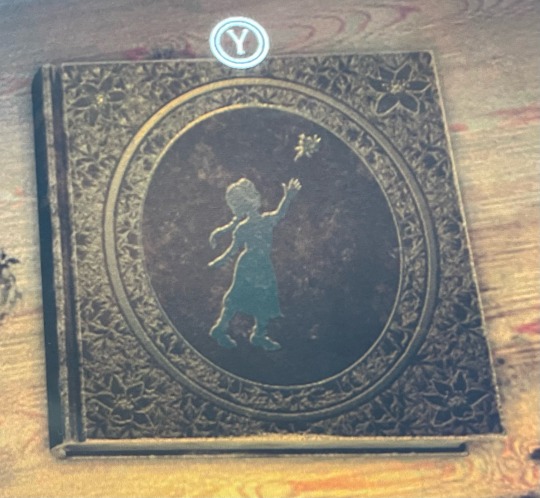
The Nacken’s origin
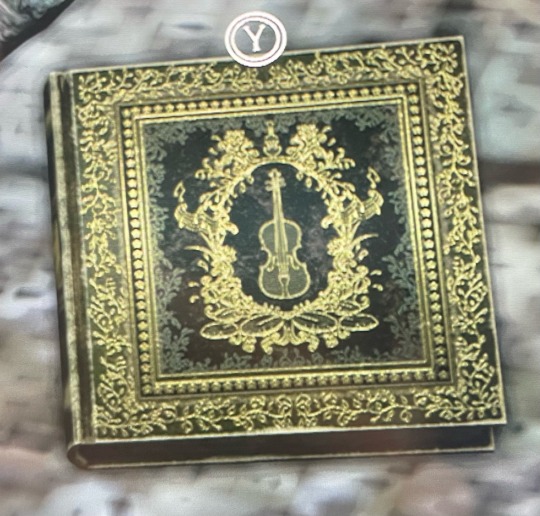
The book of witchcraft

King Nils volume I
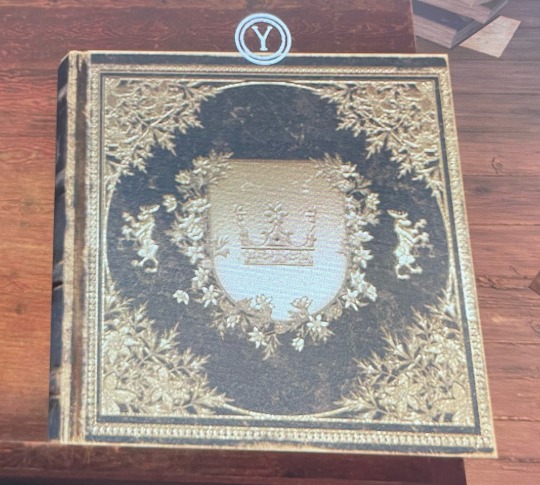
The Skogsra’s story
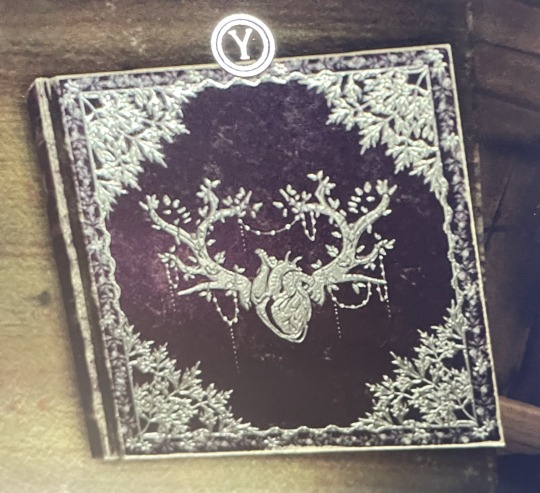
The Plague Diary
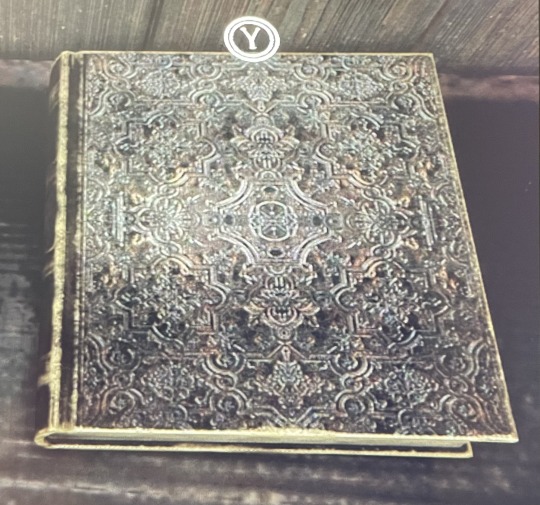
And King Nils volume II

#fairytales#trollcore#bramble the mountain king#nacken#nøkken#King Nils#skogsrå#nordic folklore#scandinavian folklore#scandinavian troll#video games
150 notes
·
View notes